Montgomery, AL Pollen and Allergy Report for Summer 2023
Pollen Allergy Trends in Montgomery, AL
When is pollen lowest in Montgomery, AL?

May
Lowest month total PPM
Avg. PPM
When is pollen highest in Montgomery, AL?

March
Highest month total PPM
Avg. PPM
How does pollen in Montgomery, AL compare to Alabama?
Montgomery has a higher average PPM than the state of Alabama.
Montgomery yearly avg PPM:
Alabama yearly avg PPM:
How does pollen in Montgomery, AL compare to the USA?
Montgomery has a higher average PPM than the USA.
Montgomery yearly avg PPM:
USA yearly avg PPM:
Is pollen worse this year in Montgomery, AL?
Spring 2023 was better than spring 2022.
Spring 2023 PPM:
Spring 2022 PPM:
Average PPM in Montgomery, AL
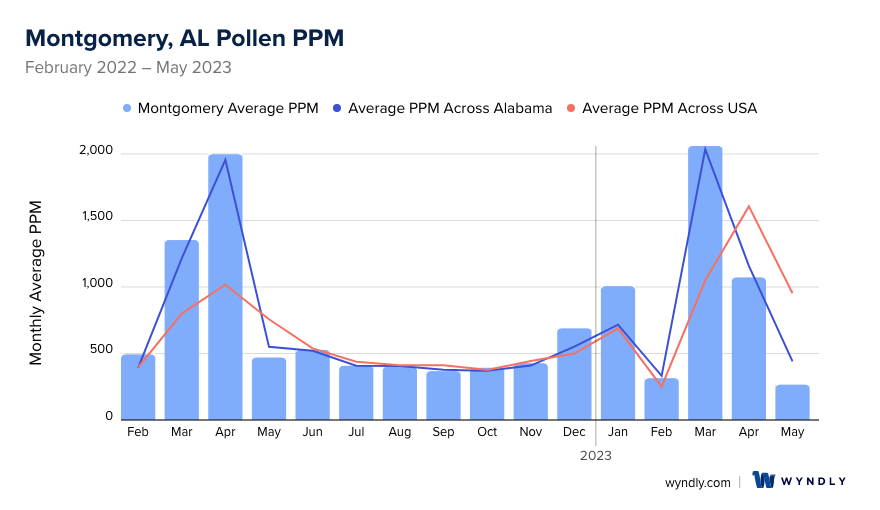

Montgomery, AL Pollen and Allergy Breakdown by Month
Grass
When is grass pollen highest in Montgomery, AL?
April has the highest grass pollen in Montgomery, AL with an average PPM of
When is grass pollen lowest in Montgomery, AL?
December has the lowest grass pollen in Montgomery, AL with an average PPM of
Tree
When is tree pollen highest in Montgomery, AL?
March has the highest tree pollen in Montgomery, AL with an average PPM of
When is tree pollen lowest in Montgomery, AL?
September has the lowest tree pollen in Montgomery, AL with an average PPM of
Weed
When is weed pollen highest in Montgomery, AL?
June has the highest weed pollen in Montgomery, AL with an average PPM of
When is weed pollen lowest in Montgomery, AL?
February has the lowest weed pollen in Montgomery, AL with an average PPM of
Montgomery, AL Pollen Monthly Breakdown by Pollen Type
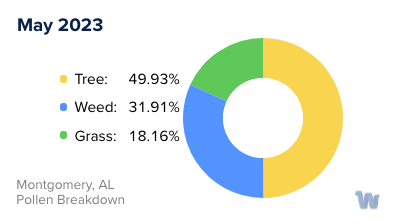
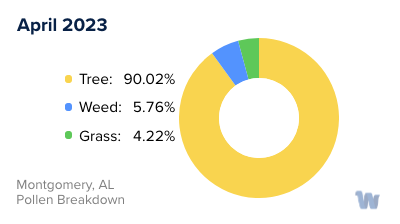
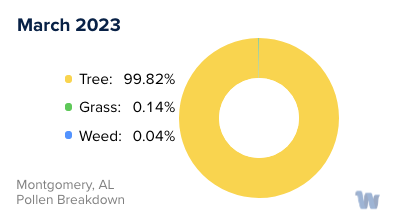
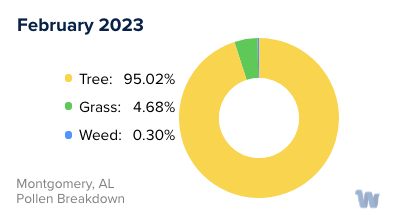
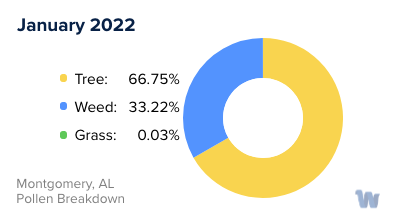
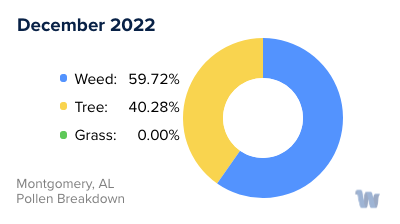
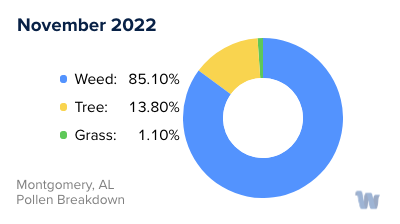
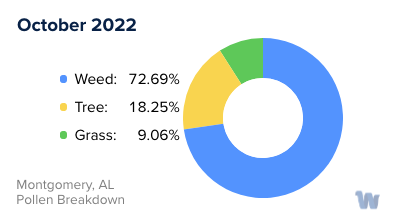
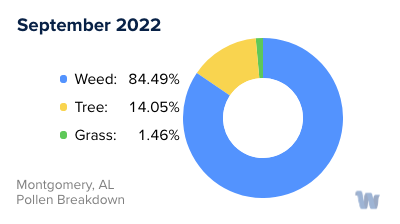
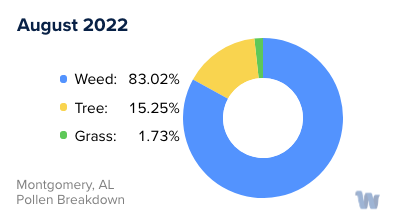
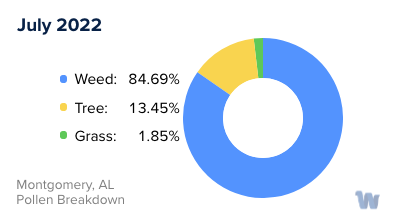
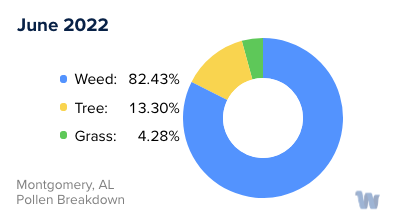
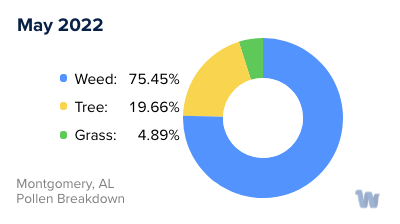
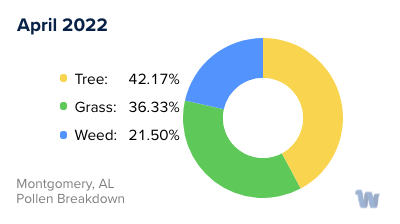
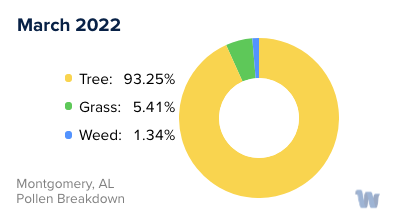
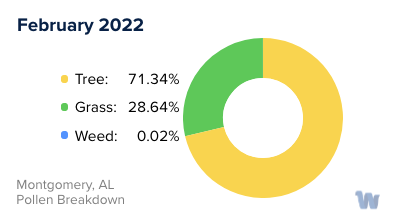
Pollen and Hay Fever in Montgomery, AL
The beautiful city of Montgomery, Alabama, nestled in the Southeastern region of the United States, is known for its rich history, vibrant culture, and blooming flora. However, for individuals prone to allergies, this floral bounty could be a source of discomfort, particularly during certain seasons of the year. One of the most common allergens in this region is pollen, a fine powder produced by flowers, trees, grasses, and weeds.
In Montgomery, the three primary types of pollen that affect allergy sufferers are tree pollen, grass pollen, and weed pollen. Each of these pollens is most prevalent during different times of the year, correlating with the flowering periods of the plants that produce them.
Tree pollen is the earliest to appear, typically in late winter and early spring. The primary sources of tree pollen in Montgomery are oak, pine, and cedar. These trees release copious amounts of pollen into the air, turning cars, sidewalks, and outdoor furniture into a yellow-green hue. These tiny particles can trigger a set of allergic symptoms commonly known as hay fever.
Grass pollen emerges in late spring and early summer, with Bermuda grass, ryegrass, and Kentucky bluegrass being the most common culprits. While less visible than tree pollen, grass pollen can be just as potent, especially on windy days when it's easily spread through the air.
Finally, weed pollen, mainly from ragweed, mugwort, and nettle, surfaces in late summer and fall. It's worth noting that a single ragweed plant can produce up to a billion pollen grains in a season, causing misery for allergy sufferers.
Understanding the pollen calendar in Montgomery can help individuals anticipate and prepare for the challenges posed by these allergens. While avoiding exposure completely may not be feasible, knowing when each type of pollen is at its peak can be helpful in managing daily activities and maintaining a good quality of life. Remember, knowledge is the first step towards living comfortably with pollen allergies.


